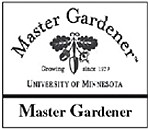June 3, 2004 at 1:16 p.m.
Many gardeners are wondering if you need more than one variety of apple tree for pollinating. Apple trees are neither male of female. Their flowers all contain both male and female parts. However, they must be fertilized with pollen from a different apple or crabapple variety in order to develop fruit. That’s why planting two trees of the same variety is no better than planting one. Genetically speaking, the pollen is all the same. A bee moving from flowers on one tree to flowers on the other simply doesn’t cross pollinate them.
If you live in an area where several other apple or crabapple trees grow nearby, you need only plant one tree. Bees will fly from yard to yard in search of flowers. If your home is isolated from others, or there are no apple or crabapple trees nearby, you would be better planting two different apple varieties in your yard.
If you are thinking about planting apricot, pears or hybrid plums, the same rules apply as for apples. You may get a few fruits with one tree, but unless different varieties are nearby, you won’t get many. If you are still planning to plant fruit trees, be sure to get semi-dwarf or standard root stock. Dwarf root stock fruit trees are not always hardy for our area. The one down side for standard trees is that they take seven to eight years to bear fruit rather than three to four years.
There are some basic rules when spraying. Know what you’re spraying and the reason you are spraying. Also, most of us spray at the wrong time and use too much spray. My advice to gardeners who are just starting a few new fruit trees is not to spray until you must.
The main pest for the owner of a home orchard is the apple maggot. This is the pest that makes brown lines throughout the inside of the apple and disfigures it from the outside. One big mistake gardeners make is spraying for the apple maggot too early in the season.
Apple maggots develop from eggs laid in the fruit by small black and white flies. The flies begin to emerge from the soil in July and in approximately 7-10 days are ready to lay eggs. Many eggs may be laid in a single apple and are inserted under the skin of the fruit. Egg laying may continue throughout August and September.
Use a general orchard spray, which can be purchased at most garden centers.
Plum curculios and codling moths are another story. Plum curculios can infect up to 90 percent of unsprayed apples in a home yard. These insects over winter as adult weevils in the plant debris on the ground. They have mottled brown, black and gray coloring and a bumpy appearance. They move to apple trees to lay eggs about the time the trees bloom. As the female weevils deposits their eggs into apples, they create crescent shaped scars on the apple skin. Severely attached apples become deformed and knotty-looking. Larvae feed for about two weeks then exit from fallen apples and pupate in the soil. They later emerge in the summer and hibernate. There is one generation per year.
Codling moths overwinter as mature larvae. Moths start to appear in spring as the last petals fall from apple blossoms. Female moths lay eggs on fruit and nearby leaves, which hatch in 6-14 days, depending on temperature. Codling moths can damage apples by burrowing through the apple into the core, either from the side or from the end. This causes small damaged areas as where larvae start to feed but then stop. After feeding for about three weeks, full grown larvae exit the fruit in late July and pupate on the trunk or larger branches of the tree. A second generation can occur starting in late July or August.
The control of plum curculios and codling moth is most effective if applications begin 7-10 days after petal fall and then every 10-14 days thereafter through-out the season. When you purchase a spray for these insects be sure that the spray you buy, controls these insects.



Comments:
Commenting has been disabled for this item.